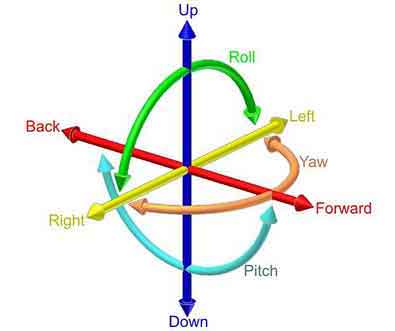Why Does Stylus Vibration Matter?
Tonearm design normally focuses on high quality bearings, with the view that if bearing quality and fit are well-engineered, then mis-tracking or bearing ‘chatter’ are avoided. These assumptions are partially correct, and hence they shift attention away from structural vibration which is actually very significant in terms of sound quality. A survey we conducted with over a thousand people showed 82% of participants thought that the bearings affected tonearm performance more than the armtube structure.
Whilst we make every effort to make sure the bearings are constructed to a very high standard, evidence shows the arm-tube has the most influence on performance.
Micro-vibrations are similar to electricity or sound waves, which we know to exist because of their effects. We can picture micro-vibrations by hitting a long tubular railing, you can hear it resonating even though you cannot see it moving. If you sit in an aeroplane, you can feel the engine causing the whole structure to vibrate but again you cannot see the movement.
Another powerful illustration of unseen vibration, can be seen in the effects of underwater shock on naval ships. When a mine explodes under a vessel, it turns compartments into areas full of bolts and fittings, flying around at 400mph (600km/hr). Nothing survives, but much of the hull structure remains largely intact, whether or not the hull is even breached.
A cartridge is an amazing device. It tracks with pressure measured in tons per square inch, and momentarily melts vinyl as it travels down the undulations of your record grooves. To visualise the micro-vibration generated by this tortuous travel, imagine a miniature man with a sledge-hammer standing in front of the stylus and banging it from side to side with all his might. This energy goes into your tonearm and once it does, things get very complex.
To illustrate the complexity of cartridge movement, it helps to give an extreme example of just one of the types of motion experienced. If you imagine a ship in a storm, the movement can be broken down into 6 degrees of motion, namely 3 rotational axis (roll, pitch, and yaw) along with 3 linear movements (heave, surge, and sway). These movements all occur with a cartridge. This seems farfetched, but we are talking about minuscule movements, amplified to such an extent that it is almost impossible to get our heads around.

When tonearms cause cartridges to under-perform, the results are a loss of clarity and almost every other aspect imaginable. For example, some arms can sound ‘dull and lifeless’ whilst others have a tendency to sound ‘harsh and uncontrolled’. Improving your arm will enable your cartridge to sing in ways that you would not have conceived possible. In fact the true extent of the sublime improvements wrought after changing to an Origin Live arm always seems to come as a delightful surprise to people.
Only fast-frame photography at 800 frames per second, shows why these fittings fly off with lethal consequences. It’s down to the incredibly high-speed vibration ‘ripple’, that is sent through the structures – so fast that it snaps 10mm bolts in half. You would never see this ripple, as the eye can only see the equivalent of 60 frames per second, but it is there – revealed by slow motion replay of the high-speed bending that flicks off any object attached to the structure.
Music lovers tell us that after years of searching, they finally find the solution to many flaws that had previously bothered them or that they were not even aware existed with their old arms. These are owners of respected and expensive arms. The good news is that you do not need to spend a fortune to achieve true high-end performance. Our tonearms are renowned for extraordinarily high performance and exceptional value for money.